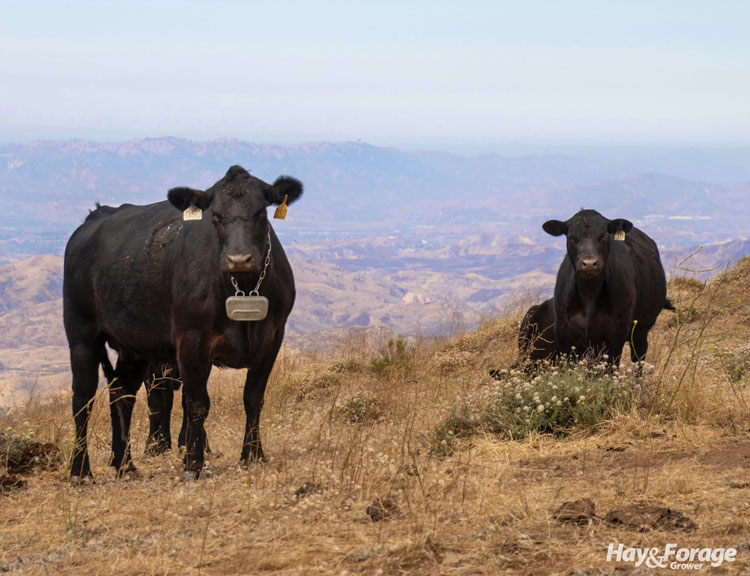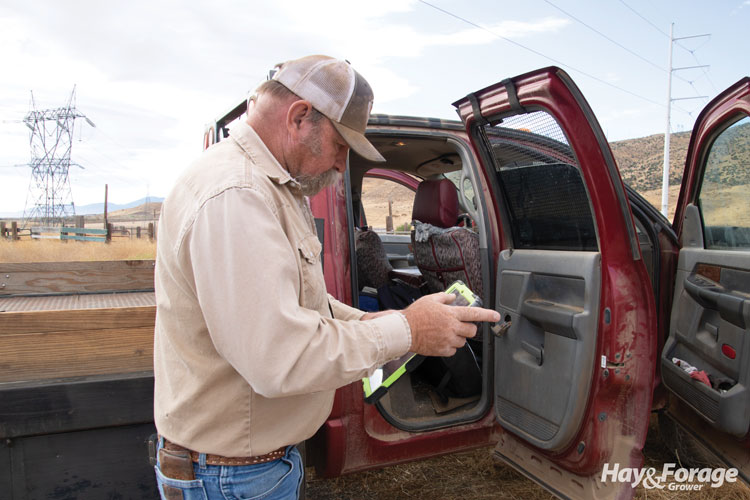
From the ripe old age of 5 years old, Mike Williams knew he wanted to be a rancher. The U.S. Army veteran grew up on a farm in Idaho, and after serving in the military for nearly a decade, he moved to Southern California to work as a cowboy. Then Williams and his wife, Lynda, established Diamond W Cattle Company when they started raising cattle of their own.
The couple used to rent property outside of Ventura before the Thomas Fire swept through and scorched the area right before their lease expired in 2017. Rather than resign the contract and try to recover the range, Williams turned his attention to another piece of land just a few miles west of Palmdale.
Ritter Ranch comprises more than 12,000 acres that stretch up the San Andreas Fault and peak at approximately 5,000 feet above sea level. It is named for the first homesteaders who settled there in the late 1890s to grow grapes, keep bees, make hay, and graze cattle. The property was later purchased by a development company and essentially abandoned until Williams started renting it and running his herd there.
The topography of Ritter Ranch poses some challenges from a grazing perspective, and the consistent drought conditions in an already arid climate put a major damper on plant growth. Nonetheless, Williams is gradually updating infrastructure by repairing permanent fences and installing solar water pumps across the pastures, and he is learning how to implement low-stress cattle handling and strategic forage management to transform a run-down ranch into productive rangeland.
A push for perennials
Instead of a permanent pasture base of perennials, Ritter Ranch is primarily covered in cool-season annuals. Legumes like filaree and rabbitfoot clover pop up between stands of wild oats and soft chessgrass. The forage greens up in late winter and early spring after the area receives most of its annual rainfall, but then plants go dormant for the rest of the year.
“Our real forage growth begins at the end of February when it starts to warm up,” Williams said. “Then you have March, and by April, the forage starts to dry out. It’s a pretty short growing season, and it can vary. But generally speaking, you get what you get during that time.”
Cattle readily graze these annual species, and Williams has found the plants provide adequate nutrition for cows to maintain body condition through most of the summer. But forage doesn’t regrow once it is defoliated, and cattle only pass through each part of the pasture one time during the year-long rotation. Come fall calving season, animals struggle to consume enough energy to support lactation and rebreeding.
“A dry cow can maintain herself through fall and into the winter here, but not a lactating one,” Williams said. “I was fall calving in Ventura, but I am switching to spring calving after figuring out that wasn’t a good strategy. I didn’t start calving until the beginning of 2023, and I’m going to try and move that date back into February, and eventually March.”
In addition to shifting his calving schedule, Williams wants to encourage the establishment of more perennial species to ensure greater forage availability for his cattle. To do this, he has been letting animals overgraze the rangeland during each rotation to reduce ground cover. This, in combination with the extremely dry growing conditions, has seemed to improve the success rate of natural reseeding of plants like purple needlegrass.
“Believe it or not, I think the drought is actually helping establishment a little bit,” Williams shrugged. “When there is not as much forage available, the cows will graze until there is hardly any thatch. Perennials tend to grow better when they don’t have to try as hard to compete with the chessgrass and other cool-season annuals.”
Herding habits
Williams does not have a comprehensive system of cross fences to divide his property into rotational grazing paddocks, but because of the way he handles his cattle, he doesn’t need them. He practices a low-stress herding technique that relies on animals’ fight-or-flight instincts. The approach is inspired by the teachings from cattle handling expert Bud Williams, which the curious rancher read about in a book called “Stockmanship: A Powerful Tool for Grazing Lands Management,” by Steve Cote.
“Using Bud’s principles, Cote found if you handle animals carefully and gather cattle in a more practical way, they will stay where you move them. They associate the journey with the place,” Williams said. “You know how well you herded cattle by how well they stayed together when you come back to check on them the next day.”
On horseback, Williams calmly corrals cattle by riding in the opposite direction he wants them to go. This allows animals to move forward on their own as opposed to feeling forced if Williams followed them from behind. As long as they have a positive herding experience, animals don’t retreat to the previous part of the pasture, and they tend to stay where they were placed for two to three days. This tactic has made cows easier to manage, especially during calving season and weaning. Williams has also noticed the herd grazes forages more evenly, which is ideal for promoting more perennial species.
“Herding pays off in your cattle, and it pays off in your pasture,” he said.
Despite the benefits of low-stress cattle herding, the strategy has some drawbacks. Sometimes individual animals break away from the group, and the rest of the herd will eventually disperse if their herding schedule is delayed by a few days. If this happens, it takes Williams just as long to collect cows into a single unit again.
“When you’re a one-man band and you’ve got a lot of things pulling you in different directions — you have water broken over here, fence broken over there, your wife needs something here — the cows will start to spread out,” he said. “You let a week go by and it takes you a week to get them back together.”
A virtual advantage
One way Williams mitigates these liabilities is by using Vence, a virtual fencing technology. With specialized software installed on his tablet, he can draw boundaries on a map of his property to keep cattle contained in the area he herded them. Animals wear collars that detect their location, and the collars beep when cows approach the boundary, or send them a shock if they cross the invisible line. The program is controlled by a satellite tower positioned in the middle of the pasture that syncs collars to the software and vice versa.
Using this system grants Williams more freedom in his herding routine. If he misses a day of moving cows down the mountain, he can edit the virtual fence lines with the press of a button and let animals move themselves. The software also displays the location of every collar, so he can see when a cow is no longer within range of the receiving tower.
Although the seasoned rancher is still getting used to the new technology, he doesn’t want to become too dependent on virtual fencing. It could possibly become a more prominent tool at Ritter Ranch, but overall, Williams plans on using it only as a backup to herding.
“I could get a little handier with the virtual fence and herding could take less of a role, but I don’t really want that,” he shook his head. “I enjoy working with my cattle.”
Working with his cattle as often as he does has afforded Williams with a more approachable and responsive set of animals. He raises all of his replacement heifers and never brings in cows from outside the herd, which is only a fraction of the size it could be if forage production reached its full potential.

Flexibility with forage
Williams has about 150 cows when he hypothetically could run close to 400. Nonetheless, this gives him flexibility in keeping weaned calves if there is a surplus of forage or selling them if yields are low.
“I keep my cow herd smaller than it would normally be and run my calves if I have the feed. That way, I can take advantage of the grass and sell them next year as feeders,” Williams explained. “If I don’t have the forage, then I’ll just sell them and take the money.”
He has also started growing and finishing calves for direct grass-fed beef sales. Customers can reserve quarters, halves, or wholes by putting down a deposit before animals are processed, and they can request which cuts they would like from the butcher before they pick up their products. Williams currently sells eight to 10 animals direct-to-consumer each year, and he hopes to grow this side of the Diamond W Cattle Company. With that said, the humble herdsman knows expanding beef production will be most successful if he continues to hone his herding skills and refine his forage management.
“My goal is to keep restoring this land and the environment so it can support better plant diversity,” Williams said, looking out at the vast expanse of Ritter Ranch. “Then I think I can increase the carrying capacity of the ranch.”
This article appeared in the February 2024 issue of Hay & Forage Grower on pages 24-25.
Not a subscriber? Click to get the print magazine.

